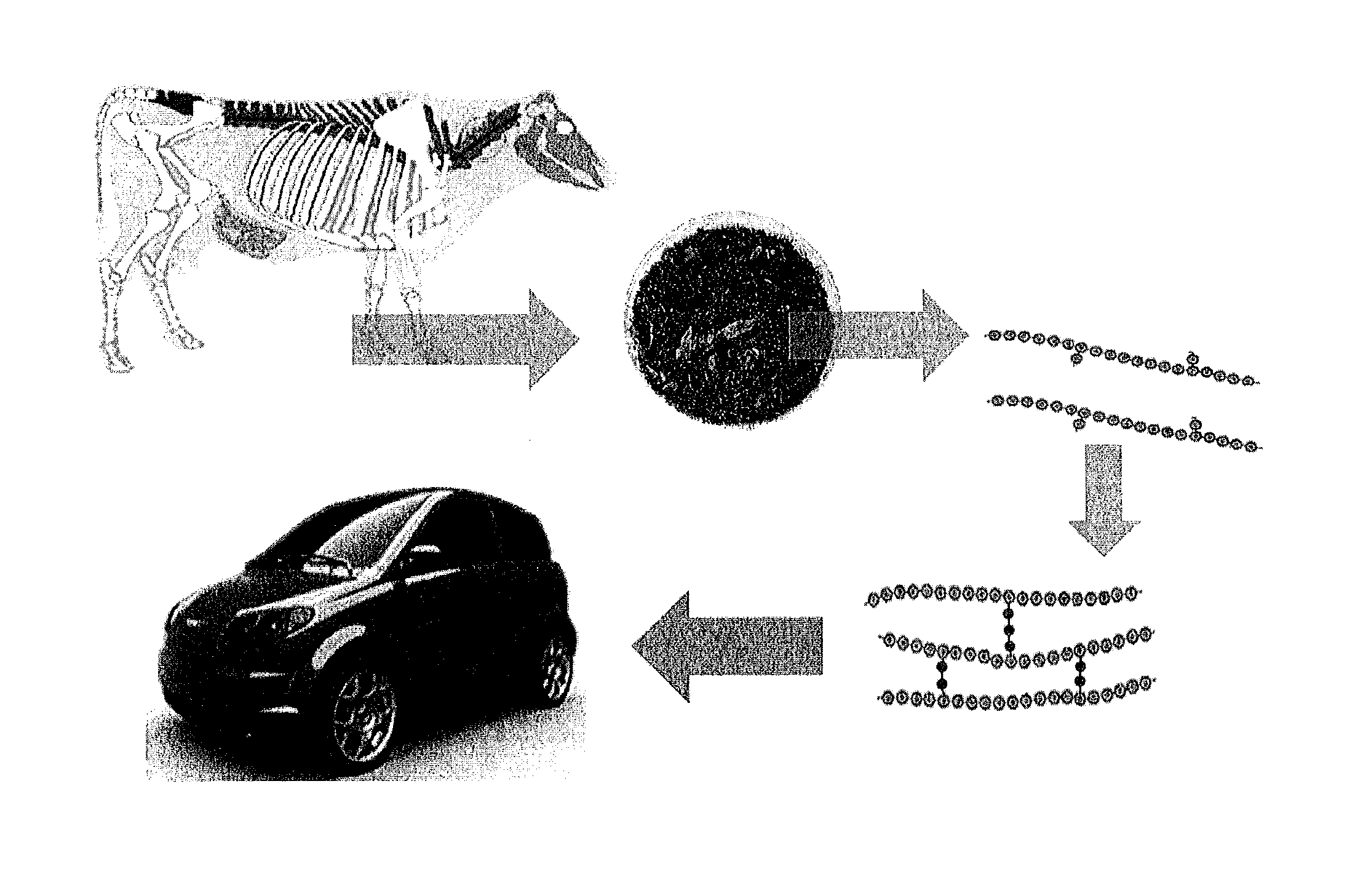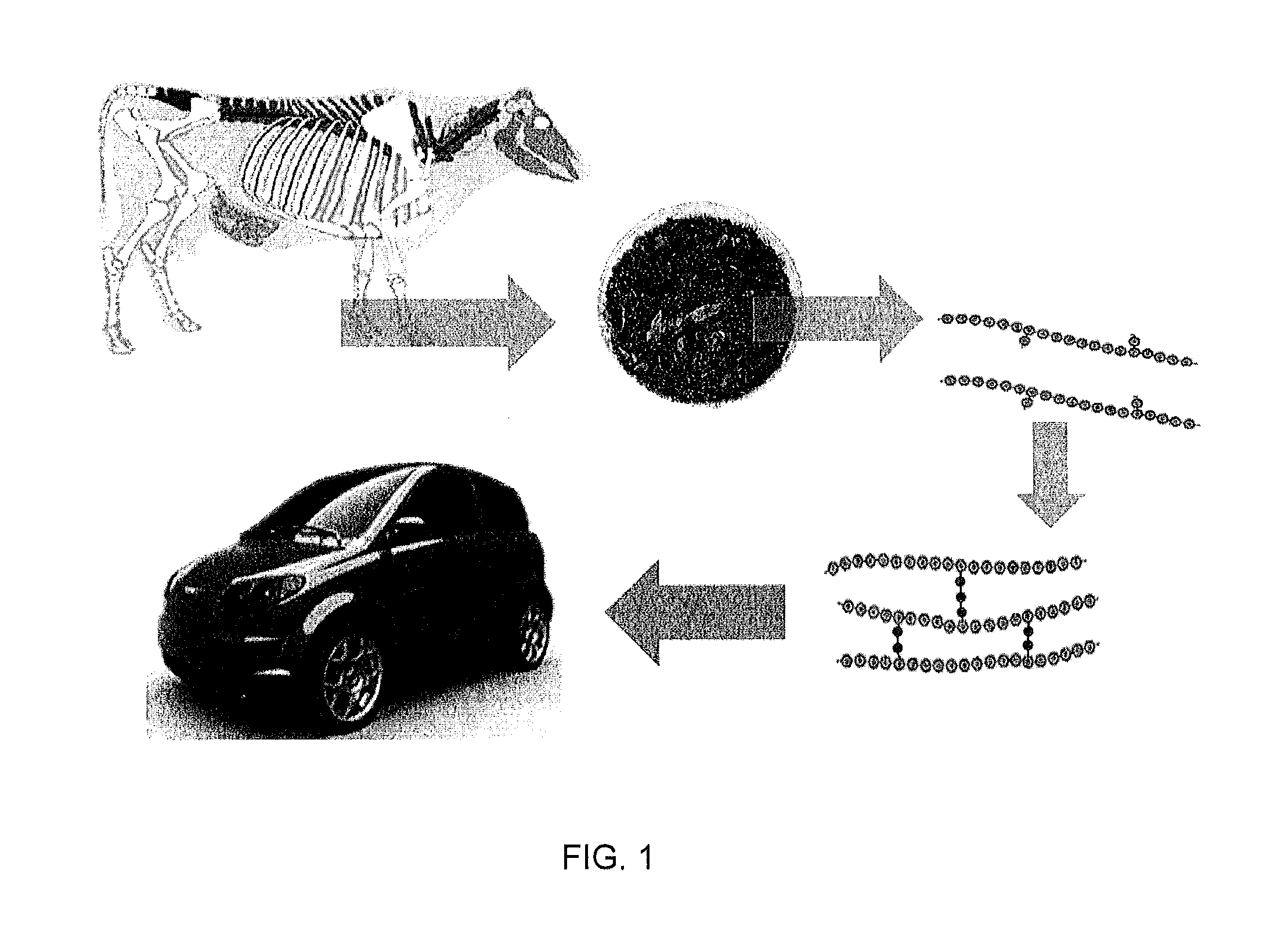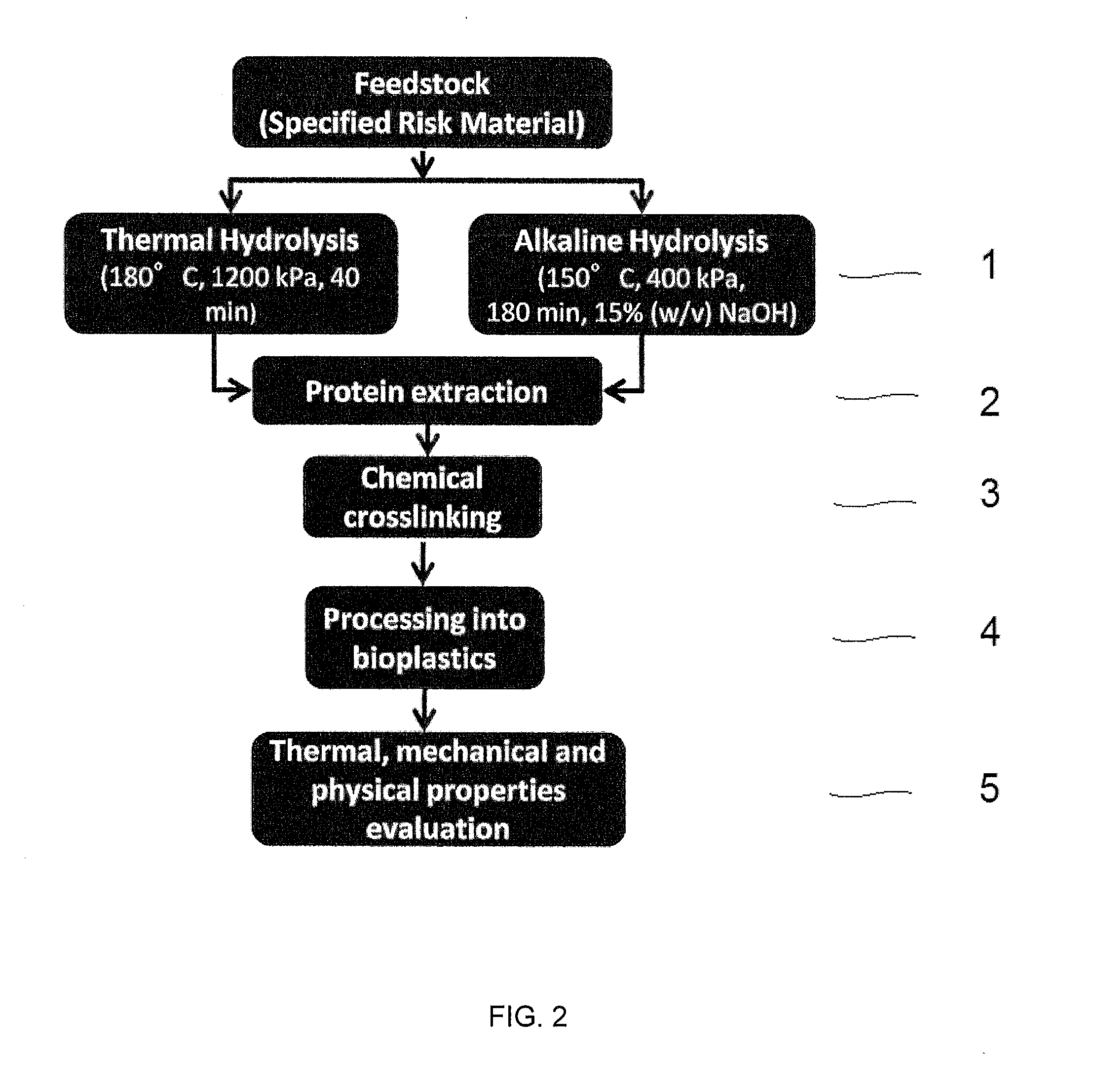Biocomposite materials derived from animal protein
a technology of biocomposite materials and animal proteins, applied in the field of biocomposite materials derived from animal proteins, can solve problems such as protein contamination risk, and achieve the effect of destroying or reducing any infectious agen
- Summary
- Abstract
- Description
- Claims
- Application Information
AI Technical Summary
Benefits of technology
Problems solved by technology
Method used
Image
Examples
example 1
Preparation of Polymers and Plastics
[0055]This example demonstrates how the method of the present invention can be used in preparing a biocomposite material from animal proteins. All experiments were performed in a Biosafety Level II laboratory (University of Alberta, Edmonton, Canada) operating under a Canadian Food Inspection Agency permit for handling specified risk material.
[0056]As the starting material, the feedstock comprised specified risk material obtained from cattle. Relatively severe hydrolytic conditions were required because of the specified risk material. Thermal hydrolysis was conducted for about forty minutes per cycle at a temperature of about 180° C., and at a pressure of about 1,200 kPa using a thermal hydrolysis reactor (Parr Instruments (Moline, Ill. USA). Alkaline hydrolysis was conducted for about 180 minutes per cycle at a temperature of about 150° C., and at a pressure of about 400 kPa using a tissue digester (Parr Instruments (Moline, Ill., USA). The alkal...
example 2
Use of RDE as Crosslinking Reagent
[0062]This example demonstrates how the method of the present invention can use resorcinol diglycidyl ether (RDE) as a crosslinking reagent.
[0063]FIG. 5 is a Fourier transform infrared spectra of hydrolyzed protein prior to crosslinking. FIG. 6 is a Fourier transform infrared spectra of the hydrolyzed protein of FIG. 5 after crosslinking with RDE. The broad absorption band in the range of 3200-3500 cm−1 corresponds to the hydroxyl (O—H) of the hydrolyzed proteins whereas the band at around 1525 cm−1 can be attributed to the amine group (N—H) of the protein chain. A comparison of FIGS. 5 and 6 depicts how both groups have disappeared following crosslinking, demonstrating that epoxy can cap both reactive moieties.
example 3
Method of Preparing Biocomposites
[0064]Twelve combinations of Araldite™ epoxy resin with 4-aminophenyl sulfone (4-APS) and with the solid, freeze-dried protein fraction produced by thermal hydrolysis as described above were produced. Three types of the fibre mats—50 mm E-glass chopped strand mat (CSM), 6.0 oz E-glass woven roving (WR) mat, and 50 mm random hemp mats obtained by a wet laid technique (HE)—were used as the fibrous component for the epoxy composites. Table 1 lists the combinations of the epoxy resin, curing agent, and the fibre mats.
TABLE 1CuringagentEpoxyFibreResinNo.LabelPlate TypeCuring(wt. %)(wt. %)(vol. %)(vol. %)1APS20Resin4-APS20800.0100.02P20Resin OnlyProtein20800.0100.03P30Resin OnlyProtein30700.0100.04APS2OCSMGlass CSM Composite4-APS208020.080.05P2OCSMGlass CSM Compositeprotein208020.080.06P3OCSMGlass CSM Compositeprotein307020.080.07APS20WRGlass WR Composite4-APS208020.080.08P2OWRGlass WR Compositeprotein208020.080.09P3OWRGlass WR Compositeprotein307020.080.0...
PUM
| Property | Measurement | Unit |
|---|---|---|
| pressure | aaaaa | aaaaa |
| temperatures | aaaaa | aaaaa |
| average molecular weight | aaaaa | aaaaa |
Abstract
Description
Claims
Application Information
 Login to View More
Login to View More - R&D
- Intellectual Property
- Life Sciences
- Materials
- Tech Scout
- Unparalleled Data Quality
- Higher Quality Content
- 60% Fewer Hallucinations
Browse by: Latest US Patents, China's latest patents, Technical Efficacy Thesaurus, Application Domain, Technology Topic, Popular Technical Reports.
© 2025 PatSnap. All rights reserved.Legal|Privacy policy|Modern Slavery Act Transparency Statement|Sitemap|About US| Contact US: help@patsnap.com



